15 Etiquette Rules For Dining At Fancy Restaurants
Some restaurant etiquette is just common sense: Don’t speak when your mouth is full, don’t tell rude jokes during the meal, and always cover your mouth when you cough.
Others can be a bit more nuanced. Who pays after a business meal? Where do you put your napkin when you stand? And how exactly does one order the perfect bottle of wine?
She shared some guidelines for dining at expensive restaurants.
DO always dress nicely.
Some still believe men should wear jackets to dinner and if a man is dining with clients — and especially clients from other countries which tend to be more formal — they should wear a jacket and a tie.
DON’T put your cell phone, keys, or purse on the table.
It’s just common sense. It distracts not only your other dining companions, but also your waiter and the entire restaurant.
DO let your guest order first.
The host, especially if it’s a woman, has to make it clear that he or she is the host. Say phrases like, ‘Will you please bring my guest…’ or ‘My guest would like to order first’ to ward off confusion.
DO set up payment ahead of time if you’re the host.
A savvy host knows to give their credit card before they sit down, or even call the restaurant ahead of time. Especially women who travel to other countries that are very male-dominated.
Also, the person who invites is the person who pays.
DON’T tell the sommelier how much you want to spend on wine.
Tell the waiter what you like, what you’re having, and give them an idea of price by simply pointing to a wine in your price range. The waiter will know to stick within that price point.
DON’T return the wine.
The protocol is you have to keep it even if you don’t like it because they opened the bottle for you.
However, if it really is awful, you don’t have to keep it. Politely explain the problem to your waiter.
DO take pictures of your food, unless you’re with a client.
Everyone is taking pictures of their food now. If it’s not distracting other restaurant patrons and you can do it discretely, it’s okay.
If you are having dinner with a client, it is not recommended. If the client wants to take pictures, however, it would be reasonable.
DO know where to place your napkin.
Wait until your host makes the silent signal of placing the napkin in his or her lap before you begin eating. Then the napkin goes on your chair seat if you stand up to use the restroom.
When you’re finished with the meal, it goes on the left-hand side of where your plate would have been — not folded, but neatly placed. Wait for the host to be the first to do so.
DON’T reach across the table to sample your companion’s food.
If you’re with someone you know better, pass them your bread plate with a little sample of food on it if you want to sample each other’s food.
DON’T yell to your waiter.
Try to make eye contact with your waiter.
If that doesn’t work, put up your right hand with your index finger raised slightly to get their attention.
DO send back food that’s not cooked properly.
“If you are with other people and you have to send your food back, it’s your responsibility to tell everyone to go ahead and start without you.
DO order the same number of courses as your companion.
This avoids awkwardness and allows you to pace yourself with the other person.
Make sure to take your time eating and pause after every few bites — especially if you’re the host, since you don’t want to make your guest feel rushed during the meal.
DON’T place your utensils on the side of your plate when you’re done eating.
It’s called a silent service code for the wait staff. When you’re finished, place the knife and fork together at the 10:20 position on the plate.
Place the fork up because in the American style you eat with the tines up.
Here’s a good example.
DON’T start a business conversation before the conclusion of the entrée.
Business should not be discussed until the meal has been cleared away.
Avoid complaining about business colleagues and work during the meal.
And DO remember your table manners!
• Wipe your fingers and mouth often with your napkin
• Cut one piece of meat or fish at a time on your plate and eat it before cutting the next one
• Butter bread on your plate, never in midair
• Look into (not over) the cup or glass when drinking
• Sit up straight, and keep your arms (including elbows) off the table
Now be prepared to order like a pro.
